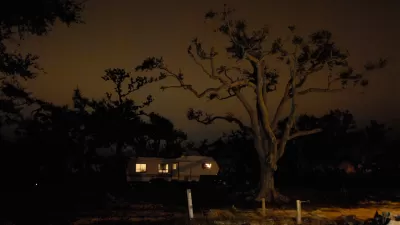Simplify some steps, delete a few details, and you can get an affordable, multi-century house for under $80 a square foot.
Who says you can't build like the old days? Clay Chapman, artist/dreamer/craftsman, is building a multi-century legacy home for the price of a vinyl-clad, production-built box. Scott Doyon tells how:
"At the building envelope, the 'one step' based structural masonry process can replace nine steps required for conventional building: framing, sheathing, wrapping, siding, exterior paint, insulation, dry-wall, interior paint and the majority of trim. That's a promising start. And from there, his ambition to keep the house under $80 a foot - on par with that of everyday, conventional tract housing - drives other design choices."
"For example, masonry corners are labor intensive, which adds disproportionately to cost, so the Adams House is a classic, 4-sided box. That may sound like a concession, but it isn't. Think in terms of homes historically. More often than not, they also started out as a box, then grew over time via smaller boxes added on. We may have become indoctrinated by the idea that over-articulation is necessary but it's simply not the case. Scale, balance, and the manner in which a building's variations catch light all contribute greatly to its dignity and presence."
Thanks to Hazel Borys
FULL STORY: Building a Custom, Multi-Century House for Under $80 a Square Foot

Maui's Vacation Rental Debate Turns Ugly
Verbal attacks, misinformation campaigns and fistfights plague a high-stakes debate to convert thousands of vacation rentals into long-term housing.

Planetizen Federal Action Tracker
A weekly monitor of how Trump’s orders and actions are impacting planners and planning in America.

San Francisco Suspends Traffic Calming Amidst Record Deaths
Citing “a challenging fiscal landscape,” the city will cease the program on the heels of 42 traffic deaths, including 24 pedestrians.

Defunct Pittsburgh Power Plant to Become Residential Tower
A decommissioned steam heat plant will be redeveloped into almost 100 affordable housing units.

Trump Prompts Restructuring of Transportation Research Board in “Unprecedented Overreach”
The TRB has eliminated more than half of its committees including those focused on climate, equity, and cities.

Amtrak Rolls Out New Orleans to Alabama “Mardi Gras” Train
The new service will operate morning and evening departures between Mobile and New Orleans.
Urban Design for Planners 1: Software Tools
This six-course series explores essential urban design concepts using open source software and equips planners with the tools they need to participate fully in the urban design process.
Planning for Universal Design
Learn the tools for implementing Universal Design in planning regulations.
Heyer Gruel & Associates PA
JM Goldson LLC
Custer County Colorado
City of Camden Redevelopment Agency
City of Astoria
Transportation Research & Education Center (TREC) at Portland State University
Jefferson Parish Government
Camden Redevelopment Agency
City of Claremont



























